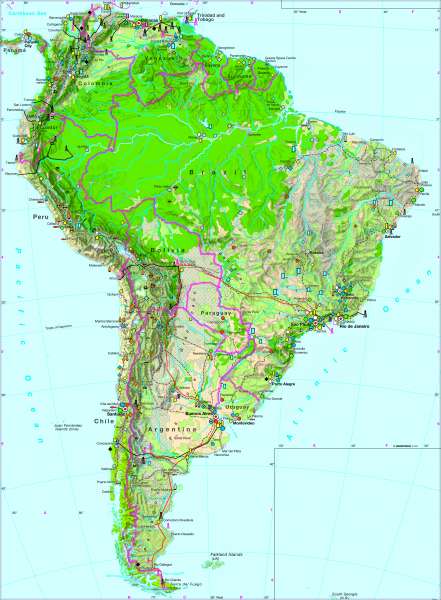South America — Economy
South America - Economy
978-3-14-100790-9 | Page 148 | Ill. 1

Information
The structure and surface of South America is very similar to North America, with the very high, geologically young Andes in the west, extensive plains with massive river systems inland, and low, geologically old mountain ranges in the east. The climate and vegetation, except for in the South, are determined by the tropical location. Moreover, different extremes are found on the eastern and western side of the Andes as well as distinctive altitudinal belts. Despite their altitude the Andes are the oldest area of settlement — and continue to be a preferred location (see, for instance, Columbia). In those countries that the Andes Mountains do not pass through, settlement is concentrated on the coast.The economically strongest countries in South America are clearly Brazil and Argentina. The highest concentration of industry is in the cities on the Rio de la Plata, in Pôrto Alegre, Sao Paulo and Rio de Janeiro on the east coast; the only competition on the west coast is Greater Santiago. At these locations the industrial structure is very diverse. In other South American countries it can be observed that industry — and therefore job opportunities — is restricted to a few main centres, often only in the capital cities. These substantial regional disparities result in widespread migration. However in Brazil, for example, it is the less-developed and sparsely populated regions inland that are the main destination of migration. Development has progressed furthest in the southeast of the rain forest region. Agriculture, logging and mining industries are concentrated along the Amazon and its tributaries, and along purpose-built railway lines and large highways (Trans-Amazonian). The high-lying plains have been transformed from the south into a mosaic of open landscape, shaped by agriculture and dominated by extensive cattle ranching.
M. Felsch; Ü: J. Moar, M. Dahl




